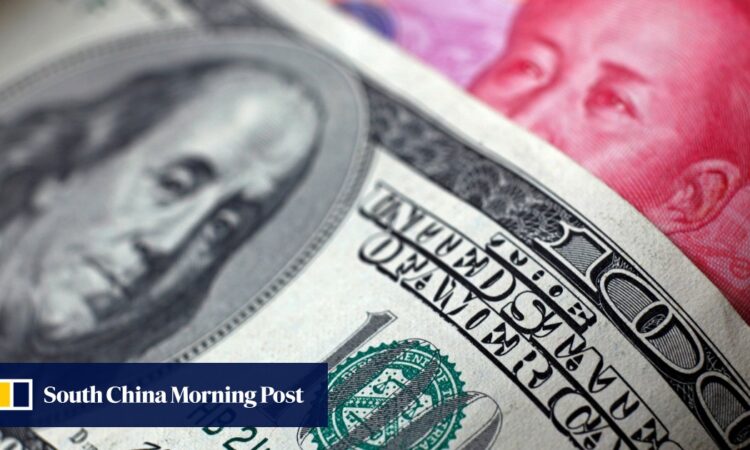China’s yuan: financial regulators vow to stem speculation, not hesitate after currency slid to 16-year low against US dollar

China’s financial regulators on Monday vowed to stem one-sided speculative bets on its currency after the yuan weakened to its lowest level in more than a decade against the US dollar amid lingering concerns over the recovery of the world’s largest-second economy.
“We will not hesitate on taking actions when necessary to firmly correct the one-sided and pro-cyclical market moves, to resolutely address the actions which disturb market order, and to unswervingly avoid the overshooting risks in the exchange rate,” the People’s Bank of China in a statement after a meeting by the nation’s foreign exchange self-regulatory body.
“Financial regulators have the ability, confidence and conditions to keep the yuan’s exchange rate basically stable.”
The yuan has continued to weaken against the US dollar in recent weeks, falling to a 16-year low of 7.351 on Friday.
Despite the depreciation of the yuan against the US dollar, it has remained basically stable against a basket of currencies, the statement added.
Regulators also played up China’s economic prospects after policies were rolled out to shore up the world’s second-largest economy and stabilise market expectations.
“Economic improvement is gaining momentum, which offers a solid footing for the yuan to be basically stable at a reasonably balanced level.”
The offshore yuan exchange rate rose to 7.2934 per US dollar soon after the release of the statement, having opened at 7.3573 in the Hong Kong market.
‘Bout of deflation largely transitory’: 4 takeaways from China’s inflation data
‘Bout of deflation largely transitory’: 4 takeaways from China’s inflation data
The yuan slipped by 1.1 per cent last week against the US dollar, taking declines this year to 5.7 per cent.
And according to a Bank of America survey, more global fund managers believe the yuan will weaken further in the next three months, as Beijing’s uninspiring piecemeal stimulus approach becomes a more widely accepted view.
Some 57 per cent of respondents in its survey of fixed-income managers believed a lack of stimulus could increase the depreciation pressure on the yuan, compared to 46 per cent in its survey in August.
Some 49 per cent money managers also see policymakers continuing to roll out piecemeal stimulus measures, up from 40 per cent in August.
But only 9 per cent expect “full-package support”, consisting of property market easing, policy rate cuts and more fiscal measures, down from 14 per cent in August.
How far will China go after yuan slides to 16-year low against the US dollar?
How far will China go after yuan slides to 16-year low against the US dollar?
There is a consensus among market participants to have a short position on the yuan due to scepticism regarding the effectiveness of stimulus measures. Short selling is a way of speculating on assets or securities that are predicted to fall in value.
The People’s Bank of China also set a stronger daily fixing, where the onshore yuan is allowed to trade up or down within a 2 per cent band, at 7.2148 against the US dollar on Monday compared to 7.3437 on Friday.
The onshore yuan closed at 7.2906 per US dollar on Monday, the strongest since last Monday.
It also urged companies and residents to stick to the principle of “risk neutrality” and avoid one-way speculation or bets on a certain level of the yuan’s rate.



